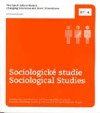Poznatky o pracovních silách v ČR jsou rozsáhlé, nejsou však integrované. Různé výzkumy popisují důležité charakteristiky, neposkytují však dostatečně komplexní obraz měnící se podoby a struktury lidských zdrojů. Zejména pak “tvrdé” statistické údaje nejsou provázány s “měkkými” postojovými daty. Komplexní informace je však nutná pro monitorování adaptace pracovních sil k požadavkům formování dynamické a na znalostech založené společnosti. Projekt chce použít dva významné datové zdroje k analýze změn od poloviny 90. let k roku 2005. Prvním jsou statistické Mikrocensy (1996 a 2002) obsahující demografické, profesní a mzdové proměnné. Druhým jsou moduly ISSP Pracovní orientace (z roku 1997 a 2005, provedený v rámci projektu), obsahující bohatý okruh postojů vztažených k objektivním znakům jednotlivců. Analýza vyústí do mnohorozměrného a dynamického obrazu pracovních sil v ČR a jejich “stavu vědomí”, spolu s mezinárodním srovnáním hlavních rysů a identifikací klíčových problémů.
Project publications (total 12, displaying 1 - 10)
The article contributes to a critical reading of opinion data by the presentation of ISSP “Work Orientations” 1997 and 2005 in the CR. Methodological problems are presented first and the framework of systemic transition is set next. Third, a comparison is made of people’s expectations regarding their work and jobs with their perceived fulfilment.
The project The Adjustment of the Czech Labour Force: Changing Job Structures, Wage Disparities and Work Orientations aimed to use various data sources to describe changes in the field in the last decade. Studies on various topics are collected to provide a multidimensional picture of the changing Czech labour force and its "state of mind", together with identification of some key problems.
The project The Adjustment of the Czech Labour Force: Changing Job Structures, Wage Disparities and Work Orientations aimed to use various data sources to describe changes in the field in the last decade. Studies on various topics are collected to provide a multidimensional picture of the changing Czech labour force and its "state of mind", together with identification of some key problems.
Projekt „Adaptace pracovních sil v České republice: změny profesní struktury, mzdové diferenciace a pracovních orientací“ směřoval k využití různých datových zdrojů k popisu změn v dané oblasti v posledním desetiletí. Jednotlivé kapitoly jsou věnovány různým aspektům problematiky, s cílem poskytnout mnohorozměrný obraz měnících se českých pracovních sil a jejich postojů, spolu s identifikací některých klíčových problémů. V první kapitole je český trh práce sledován z různých perspektiv.
The project The Adjustment of the Czech Labour Force: Changing Job Structures, Wage Disparities and Work Orientations aimed to use various data sources to describe changes in the field in the last decade. Studies on various topics are collected to provide a multidimensional picture of the changing Czech labour force and its "state of mind", together with identification of some key problems.
The project The Adjustment of the Czech Labour Force: Changing Job Structures, Wage Disparities and Work Orientations aimed to use various data sources to describe changes in the field in the last decade. Studies on various topics are collected to provide a multidimensional picture of the changing Czech labour force and its "state of mind", together with identification of some key problems.
The project The Adjustment of the Czech Labour Force: Changing Job Structures, Wage Disparities and Work Orientations aimed to use various data sources to describe changes in the field in the last decade. Studies on various topics are collected to provide a multidimensional picture of the changing Czech labour force and its "state of mind", together with identification of some key problems.
First we focus on the specific phases of the labour market as it developed in the 1990s. Second, we observe the changing composition of the labour force and labour mobility. Third, we examine the vulnerable categories of people. Policies, active labour market policies in particular, are described in the fourth section. Fifthly, we analyze the flexibility of the labour market in its various forms. In conclusion, several questions regarding the future of the Czech labour market are raised.
The autor focuses on the impulses that Western research on international migration can provide to the development of the Czech academic discourse on the subject with special regard to the contribution of economic sociology.
The project The Adjustment of the Czech Labour Force: Changing Job Structures, Wage Disparities and Work Orientations aimed to use various data sources to describe changes in the field in the last decade. Studies on various topics are collected to provide a multidimensional picture of the changing Czech labour force and its "state of mind", together with identification of some key problems.








Facebook
Twitter